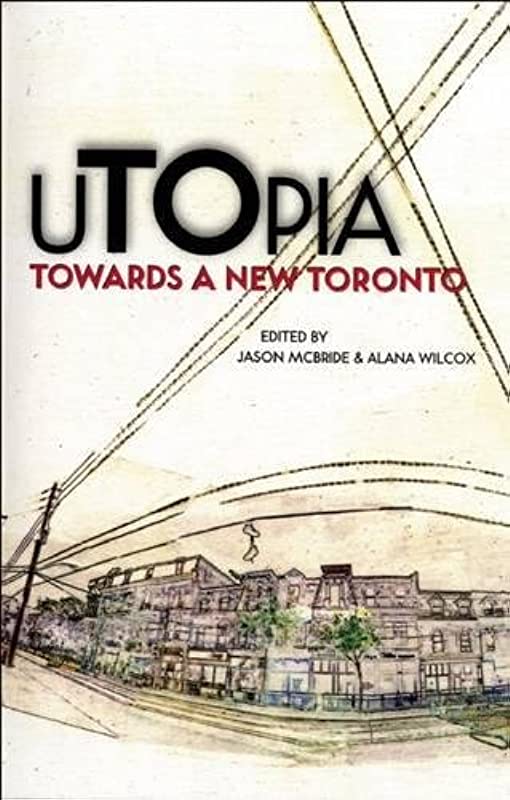Alana Wilcox and Jason McBride are enjoying Sunday lunch at a neighbourhood restaurant. At a nearby table, six people in their mid-twenties are laughing and singing so loud it’s a little hard to hear anything else. An energy is in the air. Energy is precisely what Wilcox and McBride are trying to capture in uTOpia: Towards a New Toronto, a collection of thirty-five essays about a city with a newfound zest for life, recently published by Coach House Books.
“We’ve each lived in Toronto for at least fifteen years,” says McBride, “and in the past five years, it’s the first time that either of us can remember feeling genuine pride in the city.” In their introduction to the book, Wilcox and McBride pinpoint the moment they feel this shift happened: November 10, 2003, the day David Miller was elected mayor. “He’s a mayor, and there’s going to be disappointment in his performance no matter what,” says McBride. “But his election certainly inspired a lot of this sentiment—at least the optimism.”
Wilcox and McBride, the editor-in-chief of Coach House Books, a forty-year-old Toronto cultural mainstay, and the on-line editor of Toronto Life (and Coach House’s former managing editor), respectively, felt this surge of Toronto-loving needed to be documented. This past March, they started asking friends, colleagues, and city enthusiasts to contribute essays that were non-academic, forward-looking, and playful. As proposals were submitted, the editors were surprised at the diversity of topics. The fact that only two people wrote about the waterfront is interesting, considering how often its redevelopment is discussed in the media. “People are more interested in what’s going on in their own neighbourhoods,” Wilcox says. “We want to know what’s preoccupying people right now, what things people are interested in.”

Some of uTOpia’s essays are less conventional in style, like Dave Meslin’s city hall newsletter from 2019 and Mark Fram’s “Situationist Toronto” photo essay, while some seem idealistic beyond reach, like Chris Hardwicke’s dream for a Velo-city, a futuristic network of bicycle tunnels built above ground. But whether it’s a discussion of the city’s changing street signs, houses built in laneways, or pedestrian Sundays in Kensington Market, uTOpia’s contributors touch on issues that many Torontonians will connect with.
“We would like it to [start] a larger conversation among more people in the city,” says McBride. “And to ask people to think about things in a different way,” Wilcox adds.
For the record, Mayor Miller (who wrote the book’s foreword) says he is in fact the one who feels inspired by those with an interest in shaping Toronto in the years to come. “I sense a real optimism and vision for the future of this city right now,” he says. “I honestly believe that what inspires people about Toronto is the city itself.”
Whether credit is due to Toronto’s mayor or its citizens, a new generation seems ready to propel Toronto toward the greatness it aspires to achieve. As Edward Keenan writes in his essay, “Making a Scene,” “Toronto . . . is a young city in a young country, famously grappling with its identity.” Wilcox agrees. “It kind of is, right? We’re finding our way with that kind of enthusiasm you have when you’re a teenager.” “And gawkiness,” adds McBride.